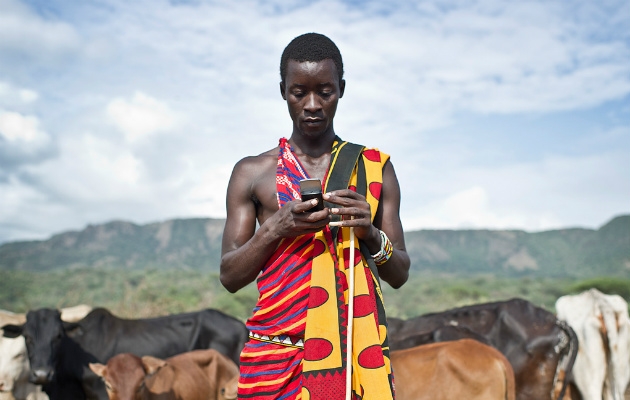Building on the Past to Invest in the Future

With 2017 drawing to a close, it is now time to put 2018 in focus. Global economic growth reached 3 percent, which is the highest growth rate the world has seen since 2011. This improvement to the worldwide economic situation means that the chances of reaching the 2030 sustainable development goals seem promising. However, our current universal circumstances, consisting of growing poverty, on-going natural disasters and climate change, propose unpredictability and frequent disruption to development progression.
Financing for Development
Natural disasters have impacted on our history, continue to affect our present, and will shape our future. They are becoming more frequent and inflicting damage that will take millions to repair. Just 4 years ago, nearly 80 percent of the U.S. population resided in counties that were victim to at least one weather-related disaster. Over US$ 350 billion has been spent on the US in the last 10 years purely to restore cities which are damaged by natural disasters. Climate change is expected to continue to simply make this situation worse.
Traditionally, victims have generally relied upon non-profit organisations working with the government to deliver emergency aid. For example, victims of hurricanes relied on organisations, such as the Red Cross and FEMA, for assistance. However, new aged options are on the rise and they are likely to become even more common as we approach 2018. One such option is crowdfunding; the number one crowdfunding platform, GoFundMe, has emerged as a popular disaster-relief organization. GoFundMe donations allow the public to provide funds to families and victims who need quick relief. As an example, this platform raised $65 million in funds within two months for Hurricane Harvey victims. Millions more has been raised by councils, other countries and the general public to support the hundreds of GoFundMe campaigns for people affected by natural disasters. In order to achieve a larger impact, we require more private sectors to make more investments and partnerships.
2017 marks a rising trend for new impact bonds; public–private partnerships will enable financial assistance for small organisations. This year, HSBC issued the world's first corporate Sustainable Development Bond aligned to meet seven selected UN SDG targets. Just weeks later, USAID announced a new Development Impact Bond that aims to reduce the number of maternal and new-born children deaths in India. Meanwhile, the ICRC created the Humanitarian Impact Bond to transform access to health services for those that live with disabilities in conflict-hit countries, a few months earlier. These innovative funding mechanisms have been created to encourage social investment from the private sector, and are expected to encourage others to follow suit.
Climate Change and Food Security
Many under-developing countries are already facing the impact of climate change, with it undermining food security, aggravating existing health threats and troubling water availability. This trend is likely to continue in 2018 with increasing losses expected in livelihoods and assets. Countries most likely to be impacted by climate change are those with limited resources to deal and recover from the consequences. This underlines the link between poverty and vulnerability to natural disaster.
At the 2017 Bonn Climate Change Conference, Climate Smart Agriculture (CSA) was discussed as the link that may tackle climate change, hunger and poverty. It aims to encompass technology, policies, practices and investments to enable countries to identify other options and trade-offs available to them. Food being vital to survival, a lack of access to the right source of food can cause disease and illness. Many farmers have taken matters into their own hands, realising they are at the forefront of climate change when it comes to the growth and maintenance of their crops. Young farmers in Kenya, named The Esteem Eagles Welfare Youth Group, gathered resources and focused on hydroponic farming due to the amount of soil that was not suitable for conventional farming.
Scientists have additionally stepped in to help retain the agriculture industry. In sub-Saharan Africa, scientists recently discovered the production of heat-tolerant wheat. Heat-tolerant wheat has significant potential to transform agriculture within countries where climate temperatures are rapidly rising, such as Pakistan, Nepal and Bhutan. New solutions and concepts are predicted for 2018, with the continuation of innovative research and technology.
Technological Advancements
This year has brought on the largest technological advancements for healthcare, as well as renewable energy. In particular, 2017 uncovered ‘mixed reality technologies’, including artificial intelligence to detect those at risk of cervical cancer. Substantial increase in the adoption of digital health solutions are expected in 2018. Furthermore, the use of mobile screening technology was considered by ear surgeon, Susan Emmett. Her findings removed the need for a professional audiologist, especially beneficial in under-developed countries, such as Malawi, where there are only two ear surgeons and eleven audiologists across the entire country. UNICEF has a team based in Malawi which supports the government in the development of the regulations and the integration of drones in the health supply chain system Drones and other new technologies are more effective than humans at responding to floods and other natural hazards as they rapidly capture data, enabling faster alerts.
Andrew Bastawrous’ created a clip-on device called the “eye-phone” that pairs with an app to take images of the back of an eye to measure sight, and sends these results to the app to be read. With 15.3% of the world’s blind population living in Africa, this type of technology would be revolutionary.
As these innovations are developed, transformed and used across the countries worldwide countries, the SDG 3 target of “ensuring healthy lives and promoting well-being for all at all ages,” is gradually achieved.
If you’d like to stay informed on the latest updates in aid and development, please sign up for the AIDF newsletter.
Image Source: Africa Technology Business Network












